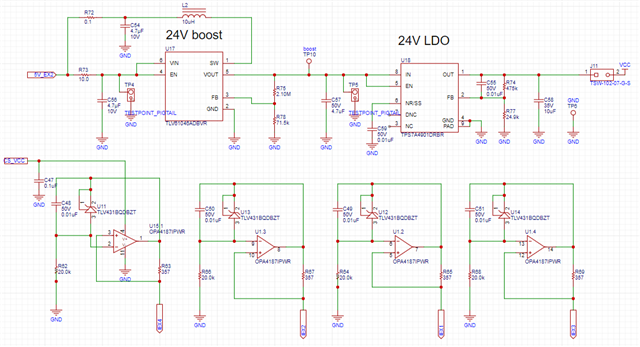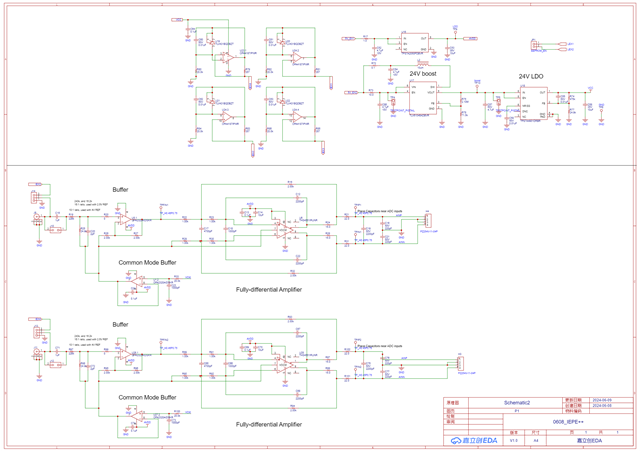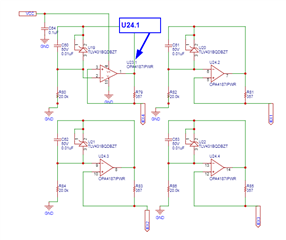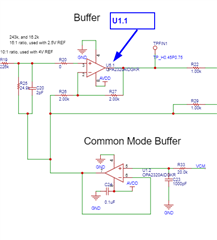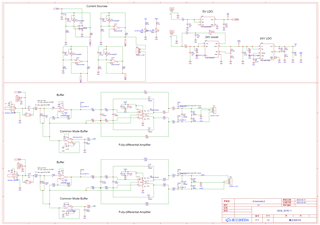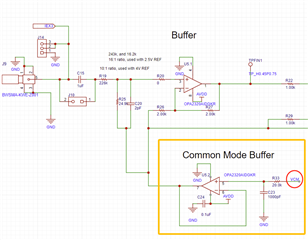Other Parts Discussed in Thread: ADS1278, ADS127L11, TIDA-010249, OPA4187, OPA2320, TLV61046
Tool/software:
I noticed that the ADS1278 can be applied to sound signal and vibration signal acquisition, but I didn't notice that the ADS1278V2EVM doesn't have an IEPE excitation source for its analog input interface. So I had to design my own IEPE excitation source short circuit.
I've learned about the ADS127L11 design 4-channel IEPE signal acquisition program before, can you provide a design (or a PCB schematic)?
Can I apply the IEPE excitation circuit part of the ADS127L11 scheme to my ADS1278V2EVM part? As shown below, is it possible to input lex1-4 to my AINP1 connector and connect this connector to my sensor?
Any help you can provide would be greatly appreciated!
